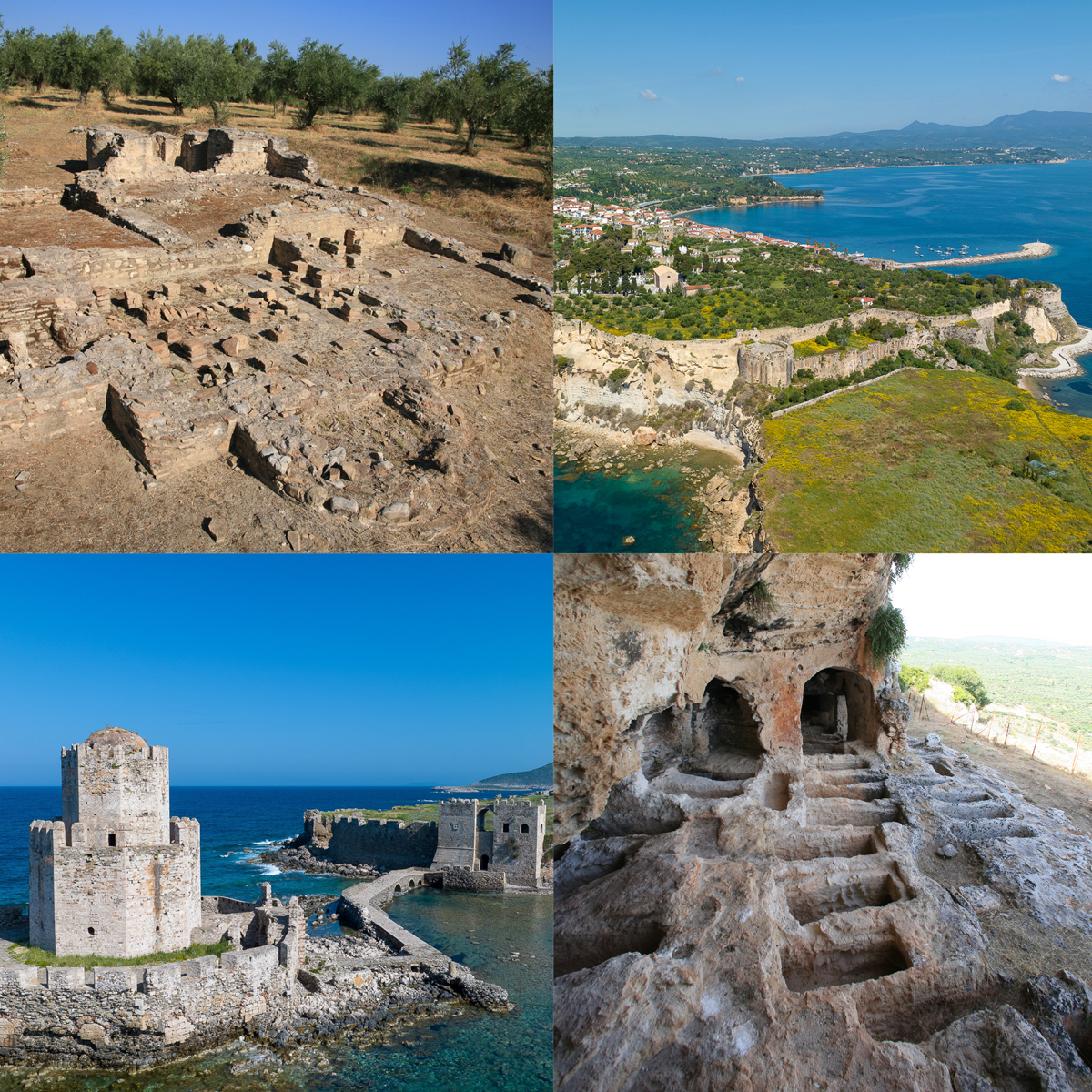
Petalidi, Koroni, Methoni
13 stops


Present day Petalidi is identified with ancient Koroni. It is said that the founder of the ancient city was the Boeotian Epimelides, in 369 BC. Its acropolis was situated on the hill called Kastro, where the fortification has been located, along with plentiful architectural remains, mainly of the hellenistic period. More recently, parts of monumental constructions have come to light for a length of ca. 65m, possibly belonging to terracing walls, as well as house and burial remains. Three hellenistic cist graves were found at the location called Portes. Villas with mosaic floors and bathing facilities reflect intensive habitation during roman times. Impressive house remains are a sign that life in the city continued into late antiquity. In later periods, the settlement was abandoned and the population settled in nearby semi-mountainous locations. During Francocracy (Frankish rule period) Koroni was a trade post of the principality of Achaea, where traders with the Venetian-occupied regions were subject to taxation. Koroni and Methoni were both thriving port cities, with strong trading activity, already since the byzantine period. Between the13th and the 15th century they were two of the most important ports in the eastern Mediterranean, under the rule of the Most Serene Republic of Venice. The city of ancient Asine was probably built at the site of Koroni’s castle by refugees from Argolic Asine, who were expelled by the Argeians in the 8th cent BC, for having allied with the Lacedaemonians. Many re-used ancient architectural members, ancient inscriptions and coins have been found in the castle. No buildings of the early byzantine city have been located, although it is mentioned in administrative charts of that time. However, the church of Agia Sofia is preserved. It was formed making use of the eastern part of a pre-existing 7th century basilica. Located at a strategic site, a crossroads of the sea routes between the western and eastern Mediterranean, Methoni has been continuously inhabited from ancient times to the present day. Under Venetian rule for two centuries, after 1209, the city became one of Venice’s strongholds in the eastern Mediterranean, with its imposing castle dominating at the west of the modern harbour.